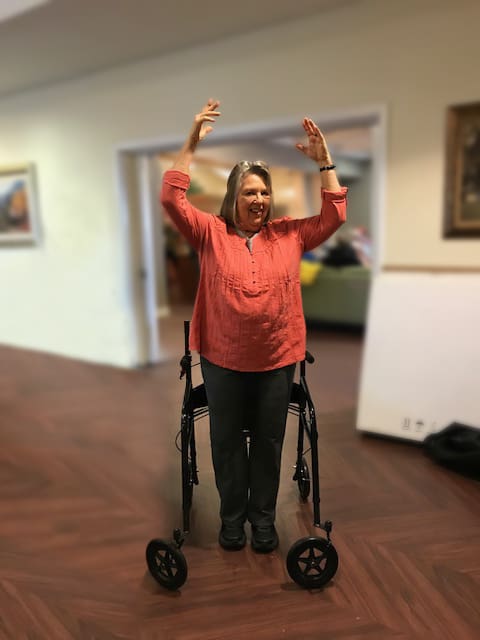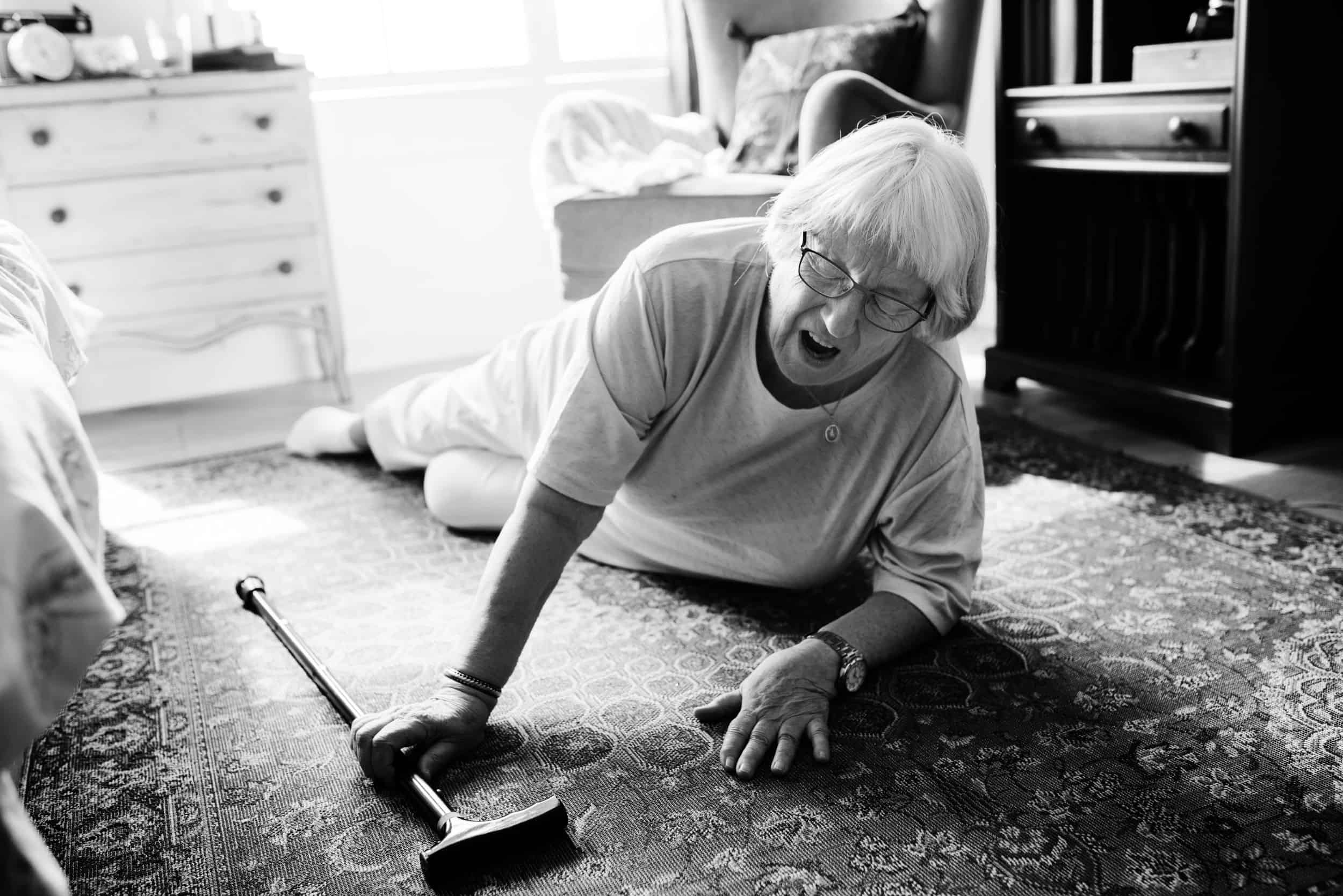 It shouldn’t be any surprise to read that exercise is good for you. What you may not know, if you have Parkinson’s disease, is just how much it can help you live a more fulfilling life.
It shouldn’t be any surprise to read that exercise is good for you. What you may not know, if you have Parkinson’s disease, is just how much it can help you live a more fulfilling life.
When you start makes a big difference. Because Parkinson’s disease is progressive, the earlier you begin exercising regularly, the more preventative it can be.
However long you’ve struggled with Parkinson’s, you will experience the most benefits if you start exercising to the best of your current ability now.
Photo Caption: The LifeGlider allows Mickie York to exercise. “I’m not using it now, but when I start slowing down again, I’ll take out my LifeGlider so I can let my legs move.”
Here are seven reasons why:
1. Exercise slows the progression of Parkinson’s disease.
Lack of dopamine is associated with neurodegenerative diseases like Parkinson’s. Decreased levels of dopamine cause abnormal brain activity, which leads to many common symptoms: impaired movement, tremors, muscle stiffness, fatigue, etc.
Research suggests that exercise prompts the brain to use dopamine more efficiently and prevent damage to dopamine neurons. Preventing this damage is a big part of slowing the progression of the disease and the severity of symptoms.
2. You can lessen the severity of your symptoms with exercise.
Exercise is very good for reducing your motor symptoms, such as tremors, rigidity and slowed movement (bradykinesia). This is partly due to the effects on brain chemistry, partly due to the increase in muscle mass and function.
Aerobic exercise that pumps up your most important muscle – your heart – and engages your limbs is effective in helping you increase your walking speed and improve motor coordination.
3. It helps you maintain mobility and independence.
Exercise builds muscle mass, which helps you maintain the strength and balance you need to stay on your feet. It supports the tasks of daily living – cooking, cleaning, standing at the bathroom sink – that keep you independent.
It’s also important for people with Parkinson’s to include flexibility exercises. These are especially helpful in combating muscle rigidity and maintaining a full range of motion.
4. Exercise improves cognition for people with Parkinson’s.
Over 10 years, researchers tested the cognitive function of people with Parkinson’s disease as they engaged in a variety of exercise programs. They published their results in 2018.
They reported that physical exercise programs “promote positive and significant effects on global cognitive function, processing speed, sustained attention and mental flexibility in PD patients.” Exercise is great for the brain!
5. If you suffer from depression due to Parkinson’s, it can help with that, too.
Depression – a persistent sense of hopelessness that can be triggered by abnormal brain function – is a common non-motor symptom of Parkinson’s. At least 50 percent of people with Parkinson’s disease will experience some form of depression during their illness.
Exercise is one of many recommended treatment options for depression. It triggers an increase in your brain’s release of endorphins (feel-good brain chemicals), takes your mind off your worries, and can improve your self-confidence as well.
6. Exercise can be a great social outlet.
Like all neurological diseases, Parkinson’s can be isolating. Whether or not you have experienced depression, you have probably experienced times when you felt alone in your struggle.
Getting out into your community to exercise is a great way to combat this sense of isolation and lower your stress as you ease your symptoms. This can be even more effective when you engage in group exercise with friends or family.
7. It can help you prevent falls.
Many of the symptoms of Parkinson’s contribute your risk of falling. Among them is axial rigidity, or the reduced flexibility and adaptability people with PD develop in their neck and trunk. This makes balance difficult as your body struggles to stabilize your center of gravity.
Exercises as simple as walking help improve lower body strength, core flexibility and gait, all of which help you stay balanced on your feet.
Examples of Exercises You Might Try
Any amount of exercise can be beneficial, but the best results generally come with the greatest intensity and duration you’re comfortable with and able to do. That depends a lot on how far your Parkinson’s has progressed. You may want to consult a doctor before you try any of these:
- Walking, even if it’s just a stroll around the block.
- Dancing, anywhere from high-intensity to slow-dancing.
- Boxing, which is great for engaging your core.
- Weight training to build muscle mass.
- Yoga, which you may need to modify depending on your level of mobility.
Engage in Safe Exercise with the LifeGlider
If your Parkinson’s disease has progressed to the point where it poses a significant fall risk, you don’t need to sacrifice exercise to stay safe. The LifeGlider enables you to enjoy the powerful benefits of exercise without the fall risk.
To learn more, check out the stories of people like you, with Parkinson’s and other neurological diseases. They are leading more fulfilling lives with the LifeGlider.
If you’d like to learn more or have questions about whether the LifeGlider is right for you, let us know. We are always happy to help!


